Why Personalized Sunscreen Matters
Sunscreen is a vital element in daily skincare, providing crucial defense against the sun’s harmful ultraviolet (UV) radiation. However, selecting the perfect sunscreen can feel overwhelming due to the myriad of products, formulations, and skin needs. Understanding how to choose sunscreen that caters specifically to your individual skin type—whether it's dry, oily, sensitive, or acne-prone—can transform your sun protection routine and enhance skin health. This guide will unravel the complexities of sunscreen selection, from ingredient types and broad-spectrum benefits to application techniques and environmental considerations, empowering you to make informed choices for your unique skin.
Identifying the Right Sunscreen for Your Skin Type and Needs
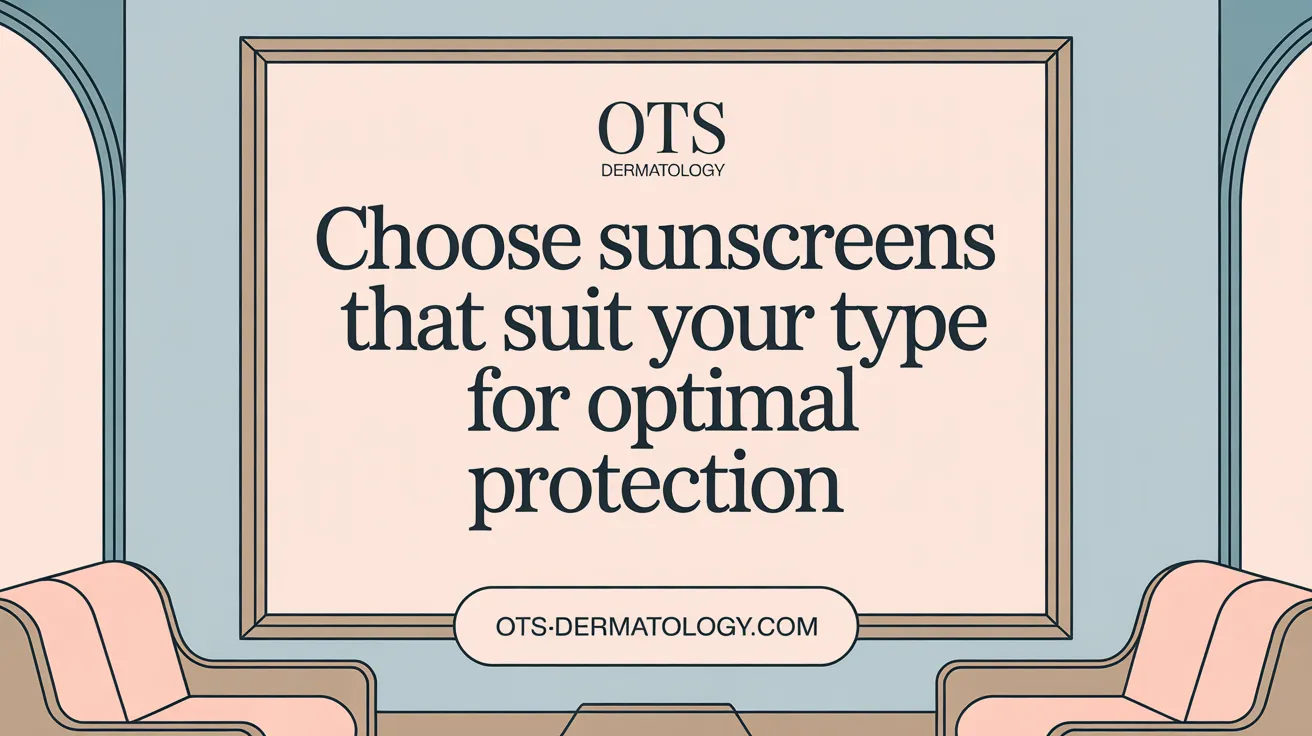 When choosing a sunscreen, it’s essential to consider your skin type and specific concerns to find the most suitable product.
When choosing a sunscreen, it’s essential to consider your skin type and specific concerns to find the most suitable product.
For those with dry skin, look for moisturizing sunscreens that contain ingredients like hyaluronic acid, glycerin, or shea butter. These help draw water into the skin and provide hydration, helping to maintain the skin’s natural barrier and prevent dryness.
If your skin is oily or prone to acne, opt for oil-free, mattifying sunscreens. These formulations can reduce excess shine and prevent clogged pores. Ingredients such as niacinamide, ceramides, and peptides can also improve skin tone and reduce acne formation.
People with sensitive skin should prioritize physical (mineral) sunscreens that contain zinc oxide or titanium dioxide. These ingredients act as a protective barrier and are less likely to cause irritation or allergic reactions. Fragrance-free options are particularly recommended.
Broad-spectrum protection is crucial, as it guards against UVA rays responsible for aging and UVB rays that cause sunburn and skin cancer. A sunscreen with SPF 30 or higher provides sufficient protection for daily use.
Choosing a sunscreen that you find pleasant to apply is just as important as its ingredients. Consistent application increases effectiveness. Make sure to reapply every two hours when outdoors, using enough product—about a teaspoon for the face and enough to cover all exposed skin—to ensure adequate coverage.
More info on selecting the best sunscreens for different skin types can be found by searching for 'best sunscreens for different skin types.' Proper selection and regular use are your best defenses against sun damage and skin aging.
Understanding Sunscreen Ingredients: Mineral, Chemical, and Hybrid Formulations
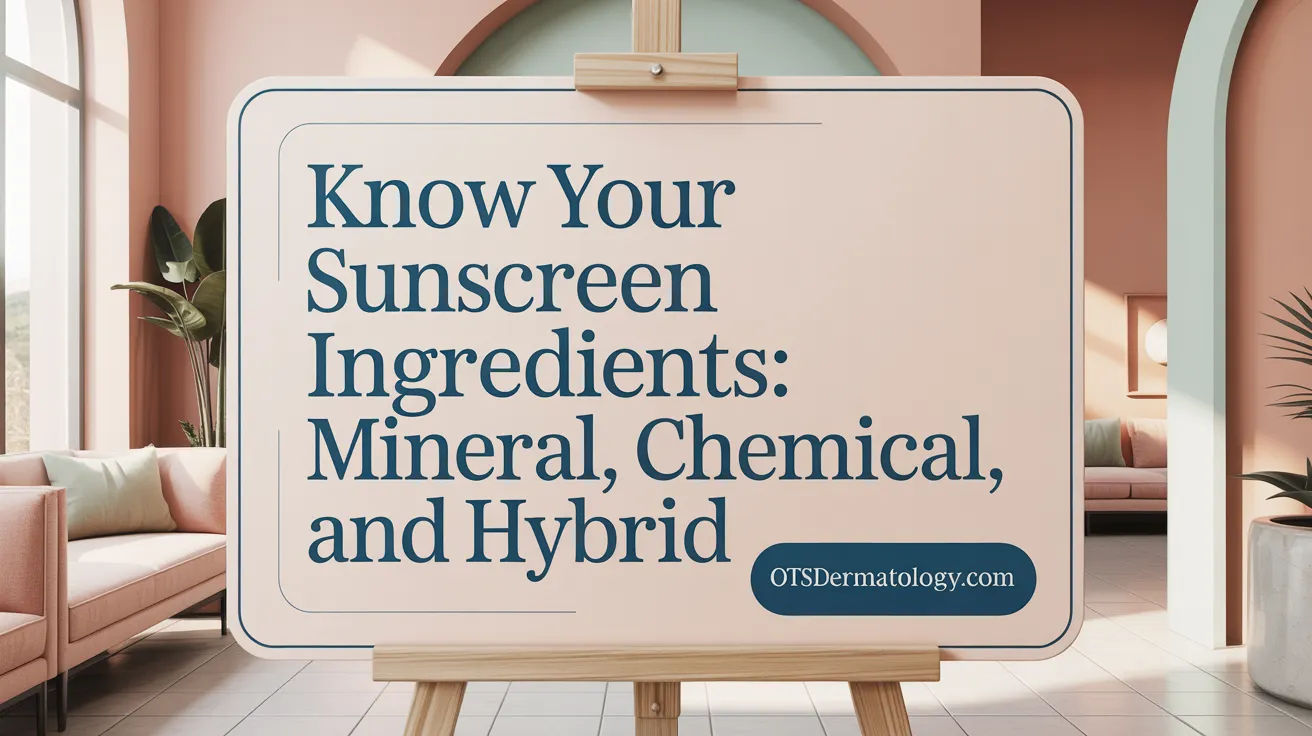
What are the differences between mineral, chemical, and hybrid sunscreen ingredients, and how safe and effective are they?
Mineral sunscreens primarily contain inorganic active ingredients like zinc oxide and titanium dioxide. These ingredients act by reflecting and scattering ultraviolet (UV) rays on the skin's surface, creating a physical barrier that provides broad-spectrum protection. They are gentle on sensitive skin, less likely to cause irritation or allergic reactions, and are suitable for children and those with skin sensitivities. Mineral sunscreens tend to leave a white cast, though tinted options can mitigate this issue (Choosing the Right Sunscreen).
Chemical sunscreens, on the other hand, incorporate organic compounds such as avobenzone, oxybenzone, homosalate, octisalate, and octocrylene. These ingredients absorb UV rays into the skin, convert them into heat, and release it from the skin (Chemical Sunscreens). They typically feel lighter and more transparent on the skin, offering a cosmetically more appealing experience. When used as directed, both mineral and chemical sunscreens are considered safe by the FDA. However, ongoing research explores the long-term health and environmental impacts, particularly concerning certain organic filters (Sunscreen Science).
Hybrid formulations combine both mineral and chemical filters in one product, aiming to harness the broad-spectrum protection and safety profiles of mineral filters with the lightweight feel and efficacy of chemical filters. These hybrid sunscreens are designed to provide comprehensive protection while improving cosmetic acceptability (Hybrid Sunscreens Explained).
Environmental considerations have increased interest in mineral-based sunscreens, as organic filters like oxybenzone and octinoxate have been associated with coral reef damage and ecological concerns, prompting bans in some places (Environmental Impact). Both types of sunscreens are approved by regulatory agencies such as the FDA and are safe when used properly according to guidelines.
What is the difference between physical and chemical sunscreens, and what are UV filters?
Physical, or mineral, sunscreens use active ingredients like zinc oxide and titanium dioxide—these are inorganic UV filters. They work by sitting on top of the skin and reflecting or scattering UV rays, providing immediate broad-spectrum protection. Because they create a physical barrier, they tend to be less irritating, making them suitable for sensitive skin types (Physical vs Chemical Sunscreens).
Chemical sunscreens employ organic compounds such as avobenzone, oxybenzone, and octocrylene. These ingredients absorb UV radiation, change its chemical structure, and convert it into heat, which is then dissipated from the skin. Chemical filters often feel more weightless and transparent but require about 20-30 minutes after application to become effective, as they need to be absorbed (Chemical Sunscreen Mechanism).
UV filters are the active ingredients in sunscreens responsible for either reflecting or absorbing UV rays. They are classified into inorganic (mineral) filters like zinc oxide and titanium dioxide, which reflect UV, and organic (chemical) filters such as avobenzone, oxybenzone, and octocrylene, which absorb UV. The choice of filter depends on skin sensitivity, environmental impact, and cosmetic preference (UV Filters Explained).
In summary, both mineral and chemical sunscreens effectively protect against harmful UV radiation when used correctly. Selecting the appropriate type depends on skin sensitivity, environmental considerations, and personal preference, with hybrid options offering versatile protection. Proper application and reapplication remain vital in ensuring maximum UV defense.
The Vital Role of Broad-Spectrum Sunscreen in Comprehensive Skin Protection
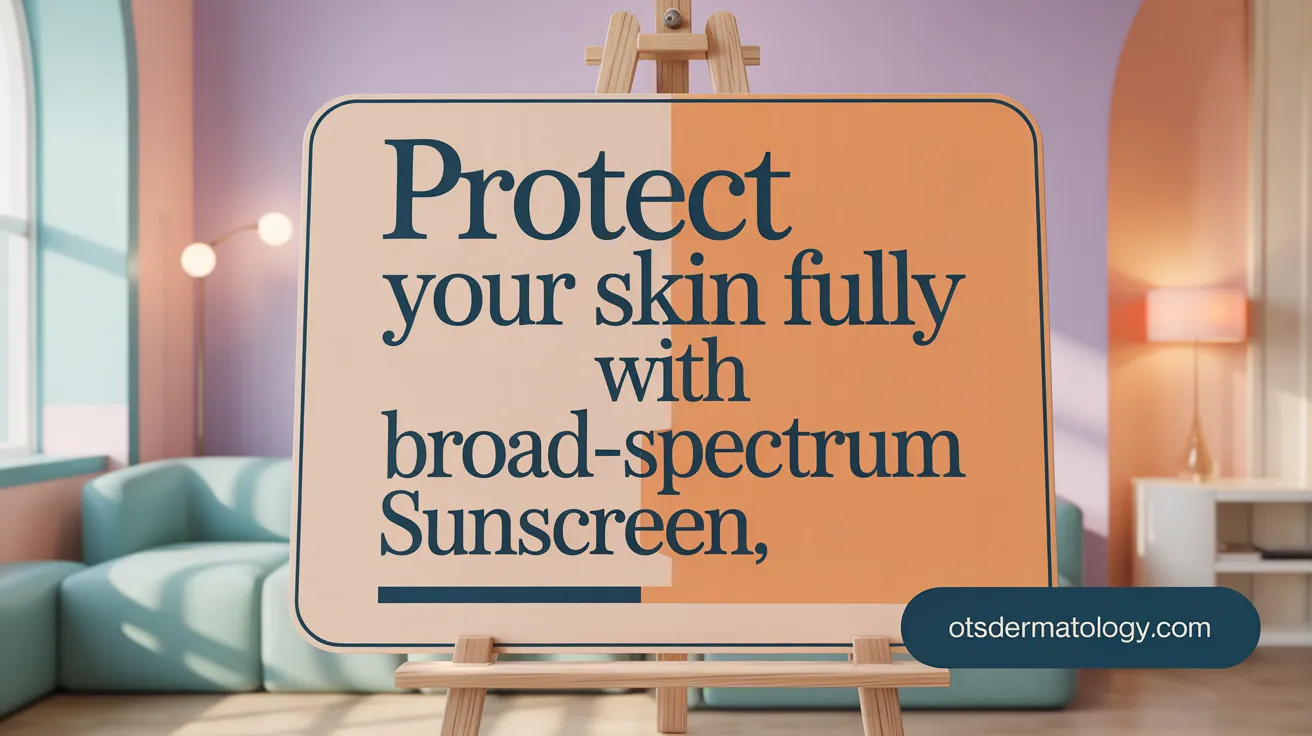 保护皮肤免受紫外线(UV)的伤害是保持皮肤健康和防止皮肤癌的关键措施。特别是广谱防晒霜,它能阻挡UVA和UVB两种有害的紫外线,提供全面的防护。UVA射线穿透皮肤深层,导致早期老化、皱纹和色素沉着的产生,同时也会引发DNA损伤,从而增加皮肤癌的风险。UVB射线则主要作用于皮肤表层,导致晒伤和细胞损伤,直接与多种皮肤癌有关。使用广谱防晒霜可以有效减少这些长期和短期的危害。
保护皮肤免受紫外线(UV)的伤害是保持皮肤健康和防止皮肤癌的关键措施。特别是广谱防晒霜,它能阻挡UVA和UVB两种有害的紫外线,提供全面的防护。UVA射线穿透皮肤深层,导致早期老化、皱纹和色素沉着的产生,同时也会引发DNA损伤,从而增加皮肤癌的风险。UVB射线则主要作用于皮肤表层,导致晒伤和细胞损伤,直接与多种皮肤癌有关。使用广谱防晒霜可以有效减少这些长期和短期的危害。
专家建议选择SPF 30或更高,且具备“宽谱”标志的防晒产品,以确保能够同时保护UVA和UVB。这是在日常护肤和户外活动中,减少紫外线伤害、延缓皮肤衰老和预防皮肤癌的重要步骤。此外,FDA规定的标签要求也确保了消费者可以识别到真正具备全面紫外线防护能力的产品。
持续使用广谱防晒霜还带来诸多健康益处。这不仅有助于预防晒伤和皮肤癌,还能减缓因紫外线引起的皮肤老化过程,使肌肤保持年轻和有弹性。因此,将它作为日常防晒习惯的一部分,对于保护我们宝贵的皮肤健康具有重要意义,尤其是对所有肤色和年龄段的人来说。
Choosing Sunscreens Tailored to Different Skin Tones
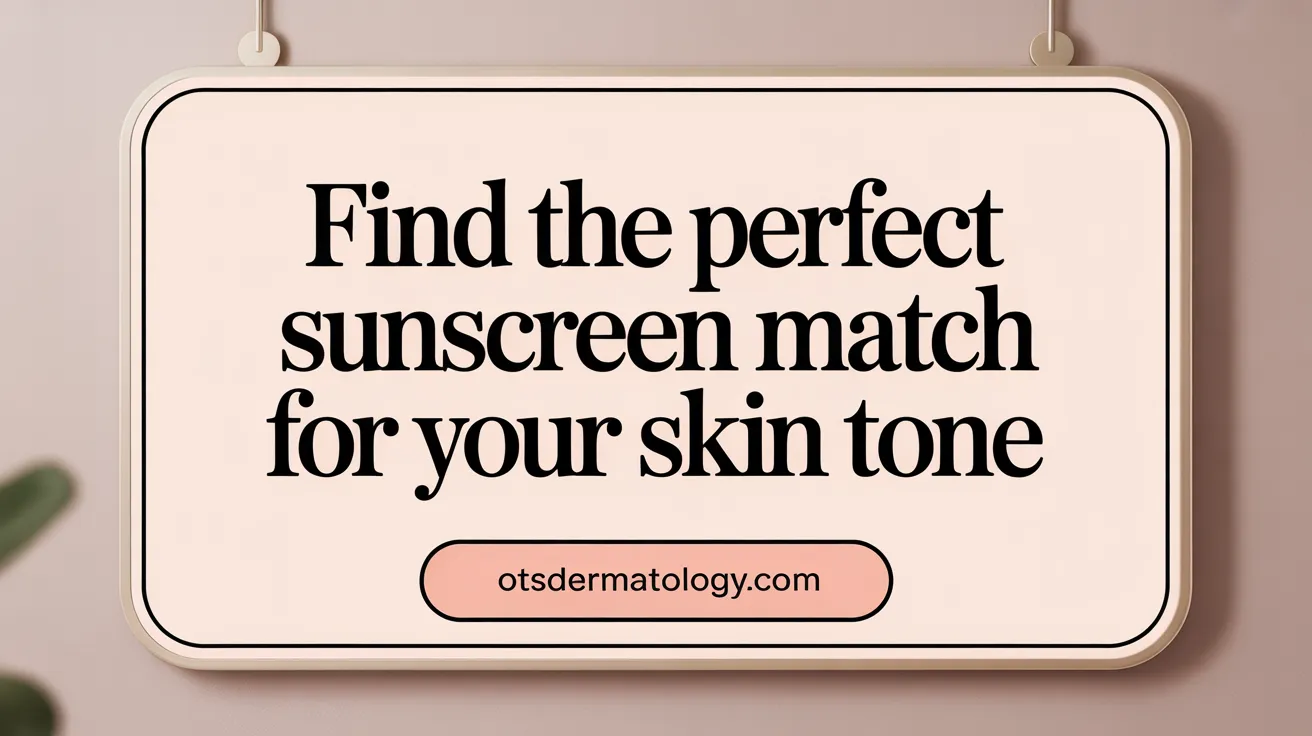 People with darker skin tones often face unique challenges when selecting sunscreens. Traditional formulations, especially mineral sunscreens containing zinc oxide or titanium dioxide, tend to leave a white cast that can be more visible on deeper skin colors, leading to reluctance in regular use. This can result in uneven protection and increased risk of sun damage. To address this, tinted mineral sunscreens infused with iron oxides are highly effective. Iron oxides provide effective UVA and visible light protection, which is important for preventing hyperpigmentation and melasma, common concerns among darker skin types. These formulations also help neutralize the white cast associated with standard mineral sunscreens.
People with darker skin tones often face unique challenges when selecting sunscreens. Traditional formulations, especially mineral sunscreens containing zinc oxide or titanium dioxide, tend to leave a white cast that can be more visible on deeper skin colors, leading to reluctance in regular use. This can result in uneven protection and increased risk of sun damage. To address this, tinted mineral sunscreens infused with iron oxides are highly effective. Iron oxides provide effective UVA and visible light protection, which is important for preventing hyperpigmentation and melasma, common concerns among darker skin types. These formulations also help neutralize the white cast associated with standard mineral sunscreens.
To avoid white residue and improve cosmetic appeal, consider products with transparent or tinted formulas that contain finely dispersed zinc oxide or titanium dioxide particles—usually in the range of 20-30 nanometers. These nano-sized particles ensure broad-spectrum protection while blending seamlessly into the skin. Additionally, incorporating warm-tone iron oxides or pearl pigments can tailor the sunscreen's appearance to various undertones, offering a natural finish.
Regardless of skin tone, dermatologists recommend using broad-spectrum sunscreens with an SPF of 30 or higher to protect against UVA and UVB rays effectively. This ensures adequate protection against skin aging and skin cancer. For darker skin, choosing such formulations not only offers protection but also maintains a natural look, encouraging consistent use.
Cost is an aspect to consider, as sunscreens designed for skin of color may be priced higher. However, investing in a formulation that combines effective sun protection with cosmetic elegance can significantly improve adherence. When selecting products, look for labels indicating 'tinted,' 'broad-spectrum,' and 'non-comedogenic' (https://www.cosmopolitan.com/style-beauty/beauty/g60572511/best-non-comedogenic-sunscreens/).
In summary, effective sun protection for all skin tones involves selecting sunscreens that are transparent, tinted, or contain iron oxides to minimize white cast, providing broad-spectrum SPF 30+ protection. Such choices help ensure consistent use, safeguarding skin health across diverse complexions.
Effective Application Techniques for Maximum Sunscreen Protection
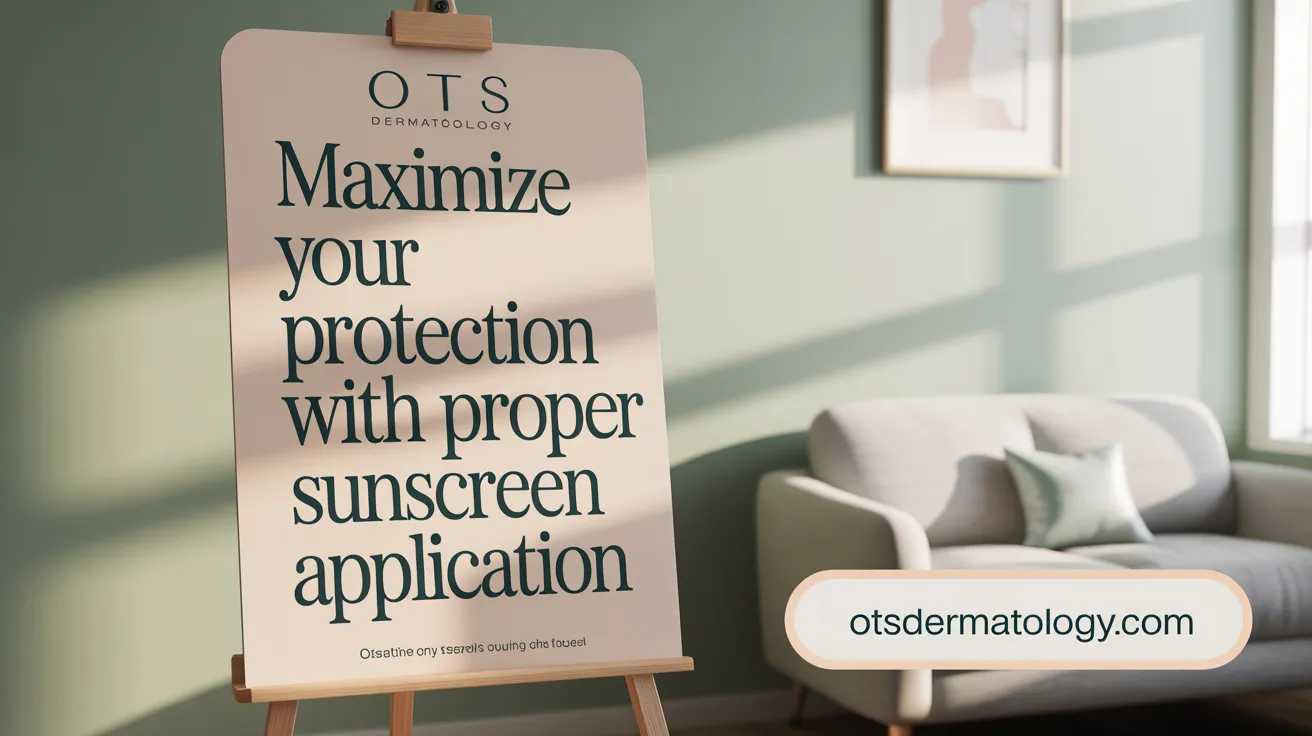 Proper application and consistent reapplication of sunscreen are essential for effective sun protection. To start, select a broad-spectrum sunscreen with SPF 30 or higher, and apply it evenly on all exposed areas of skin about 15 minutes before going outdoors. Use approximately one ounce, which is roughly a shot glass full, to cover the entire body adequately. For the face and neck, about half a teaspoon is sufficient. Pay special attention to often-missed areas such as the ears, back of the neck, the tops of the feet, hands, and any skin not covered by clothing, including the scalp if hair is thin or shaved.
Proper application and consistent reapplication of sunscreen are essential for effective sun protection. To start, select a broad-spectrum sunscreen with SPF 30 or higher, and apply it evenly on all exposed areas of skin about 15 minutes before going outdoors. Use approximately one ounce, which is roughly a shot glass full, to cover the entire body adequately. For the face and neck, about half a teaspoon is sufficient. Pay special attention to often-missed areas such as the ears, back of the neck, the tops of the feet, hands, and any skin not covered by clothing, including the scalp if hair is thin or shaved.
Reapplication is crucial, especially during prolonged outdoor activities. Sunscreen should be reapplied every two hours, or immediately after swimming, sweating, or towel drying, regardless of the water resistance claim. Water-resistant formulations offer protection for a specified period—either 40 or 80 minutes—but reapplication remains necessary whenever water contact occurs.
In addition to sunscreen, supplement your protection by wearing wide-brimmed hats, UV-protective sunglasses, and seeking shade when possible. These measures help reduce overall sun exposure, as no single product or method provides complete shielding. When applying sunscreen, ensure thorough coverage, including areas like the back, sides, and behind the ears. Using proper application techniques and reapplying diligently significantly reduces the risk of sunburn, skin aging, and skin cancer.
Always check that your sunscreen is not expired and is labeled as broad-spectrum and water-resistant if you’ll be swimming or sweating. Different formulations suit different skin types; for example, mineral sunscreens are recommended for sensitive skin, while chemical sunscreens are favored for their lightweight feel. Combining these practices creates an effective sun safety routine that maximizes protection and benefits long-term skin health.
Environmental and Safety Considerations When Choosing Sunscreen Ingredients
When selecting sunscreens, it is important to consider both environmental impacts and personal safety related to their ingredients. Many chemical UV filters, such as oxybenzone, octocrylene, and benzophenones, have been found to bioaccumulate in marine organisms, which can lead to reproductive harm, tissue necrosis, and coral bleaching. These substances can produce reactive radicals, which may cause DNA damage in marine life, contributing to ecosystem imbalance and loss of biodiversity.
In contrast, mineral sunscreens contain active ingredients like zinc oxide and titanium dioxide, which are generally regarded as safer for both humans and the environment. These inorganic filters create a physical barrier that reflects and scatters UV rays without leaching into water systems. Because of this, they are less likely to harm marine ecosystems, making them a preferable choice for eco-conscious consumers.
Regulatory agencies in some regions are increasingly restricting or banning chemical filters known to damage coral reefs and aquatic life. These regulations promote the development and adoption of reef-safe, biodegradable formulations that minimize environmental harm (source).
To support sustainability and safety, consumers should prioritize mineral or reef-safe sunscreens that clearly label containing zinc oxide or titanium dioxide. Avoiding products with ingredients associated with endocrine disruption, such as oxybenzone, and choosing formulations free from potentially harmful chemicals can reduce risks both to personal health and to the broader ecosystem.
In addition to choosing reef-safe sunscreens, wearing protective clothing, seeking shade, and avoiding peak sun hours are effective ways to reduce the need for chemical filters (sun protection tips). This combination of mindful selection and practical sun protection helps ensure both skin safety and environmental preservation.
Empower Your Skin with Tailored Sun Protection
Selecting the perfect sunscreen tailored to your unique skin type and lifestyle is a cornerstone of effective sun safety and skin health. By understanding the distinctions between mineral, chemical, and hybrid sunscreens, recognizing the crucial benefits of broad-spectrum protection, and choosing formulas suited to your skin’s particular needs and tone, you enhance both efficacy and comfort. Proper application and reapplication practices ensure maximum defense against harmful UVA and UVB rays, while mindful selection of eco-friendly and safe ingredients supports broader environmental health. Equipped with this knowledge, you can confidently integrate sunscreen into your daily routine, safeguarding your skin’s vitality for years to come.
